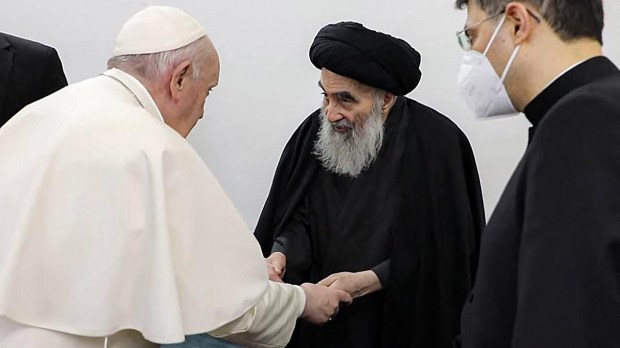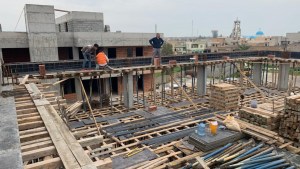A meeting between the senior leaders of the two great branches of Islam would be significant, and — according to a scholar in Shiite Islam — any such meeting could claim, at least in part, inspiration in Pope Francis.
A year after Pope Francis signed his encyclical on human fraternity on October 3, 2020, and some months after the Holy Father’s trip to Iraq, I.MEDIA interviewed a Shiite Islam specialist to understand Francis’ influence on relations between the Catholic Church and the Shiite world.
For Fr. Christopher Clohessy, a lecturer at the Pontifical Institute for Arabic Studies and Islamology (PISAI), an encyclical needs time, but Pope Francis was able to move some lines with his trip to Iraq and his meeting with the Shiite al-Sistani in March 2021.
Has the encyclical Fratelli tutti had an impact on relations between the Catholic Church and Shiite Islam?
Fr. Clohessy: An encyclical is, in general, a rather dense document that must be dissected with care and theological precision. Relations between the Catholic Church and Shi’a Islam have been ongoing for years, and I am not convinced that this document has added much. It contains concepts that are well known in the non-Islamic world; but they appear foreign in an Islamic context where there is a sometimes very different understanding of rights, duties, the nature of brotherhood, and gender issues.
I know that a Shiite group has studied the document on human brotherhood carefully—from a particular theological perspective. But Fratelli tutti seems to me to be a text that has not had any significant impact. In general, encyclicals by their very nature take years to do so.
Is the meeting between Pope Francis and Ayatollah al-Sistani last March already bearing fruit?
Fr. Clohessy: I could say the same is true of the fruits of the papal visit to Iraq, especially given the complexity of the socio-economic and religious problems besetting the country. There is no doubt that Francis’ visit marks a high point in his pontificate; it was flawless in its timing, words, and gestures. Beyond all the words that were spoken, or the statements that were made, the visit to Iraq in general and to the cities of Najaf and Ur in particular are extremely symbolic gestures in many ways.
In addition to his words of consolation and hope for Iraq’s small Christian minority—a community which, along with the Iraqi people as a whole, has suffered unspeakably for so many years—his conversation with al Sistani was a subtle but clear challenge to the Iraqi government.
Iraqi authorities must begin a conversation that may not be comfortable, about whether they would be willing to adhere to the principles set forth in the Document on Human Fraternity for World Peace and Living Together. A document which, after all, is a joint declaration of Christians and Muslims.
It is not only a question of claiming to be tolerant, but also of actually accepting the other, an acceptance of which this papal trip was a significant gesture. The need for freedom of worship and equal rights and the sharing of resources was highlighted, without forgetting the needs of other minority groups such as the Kurds and the Yezidis.
There is talk of a possible meeting between the Sunni Ahmed al-Tayeb of al-Azhar University and the great Shiite leader al-Sistani. How important would this be?
Fr. Clohessy: If Ahmed al-Tayeb, who signed the statement, does meet with al-Sistani, it would be another meeting of great importance. I am willing to go so far as to say that such a meeting would be—at least in part—inspired by Francis.
Shiites and Sunnis are not two monolithic communities; each is divided within itself by language, class, geography and ethnicity. Within each there are major disagreements over law, theology, politics and divisions between the practicing, the non-practicing and the secularized. There is and always has been a sectarian substructure that permeates all Middle Eastern politics.
But while there have been many periods of violence between Shiites and Sunnis—sometimes so severe that some minority Shiite communities speak of “Shiite genocide”—there have also been long periods of harmony. Contemporary scholars describe moments not only of harmony, but also of active cooperation, so that we have a picture of Shiite-Sunni interaction that oscillates between enmity and cooperation, harmony and collision.
Any meeting between the senior leaders of these two Islamic families, if genuine and inspired by good intentions, would have a great impact.


